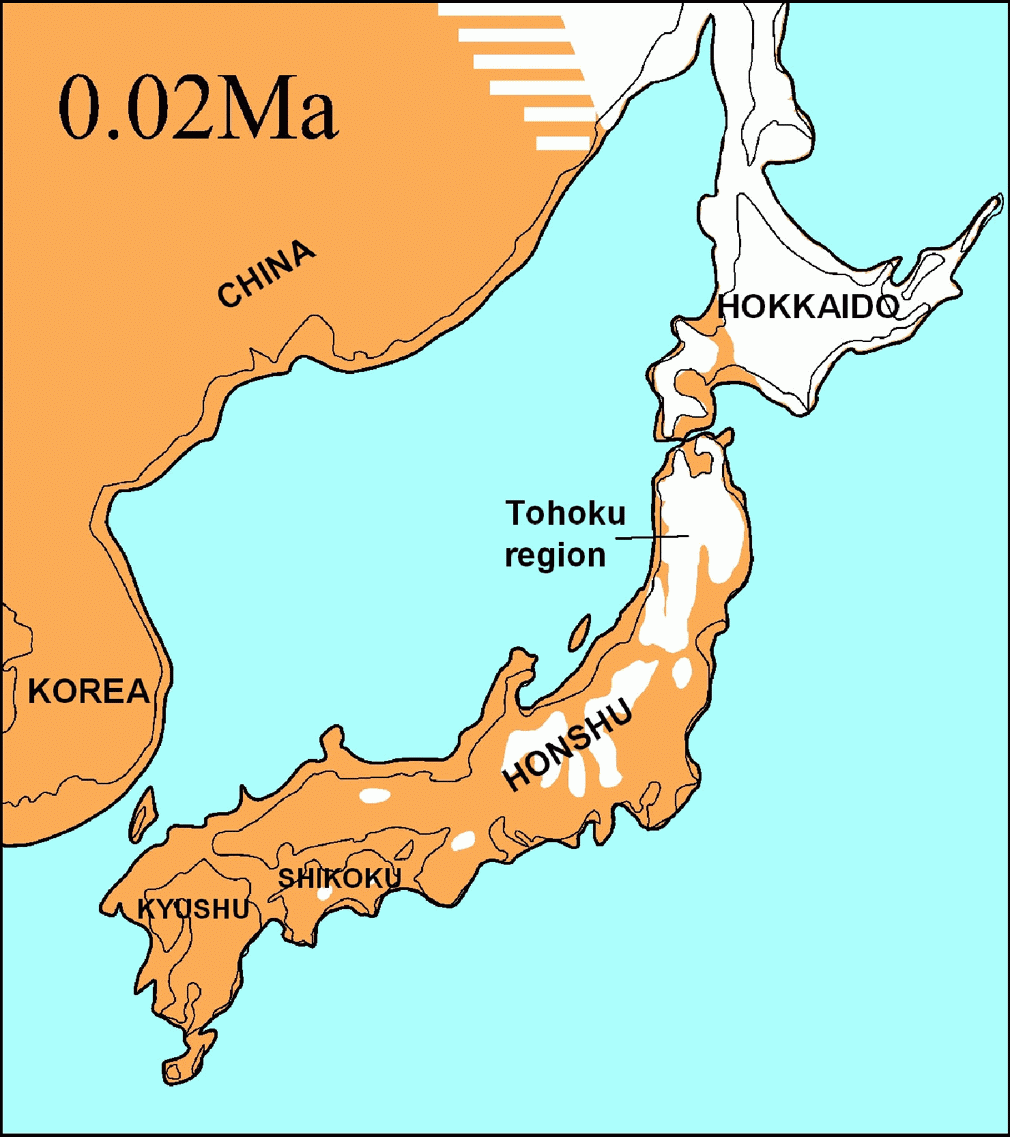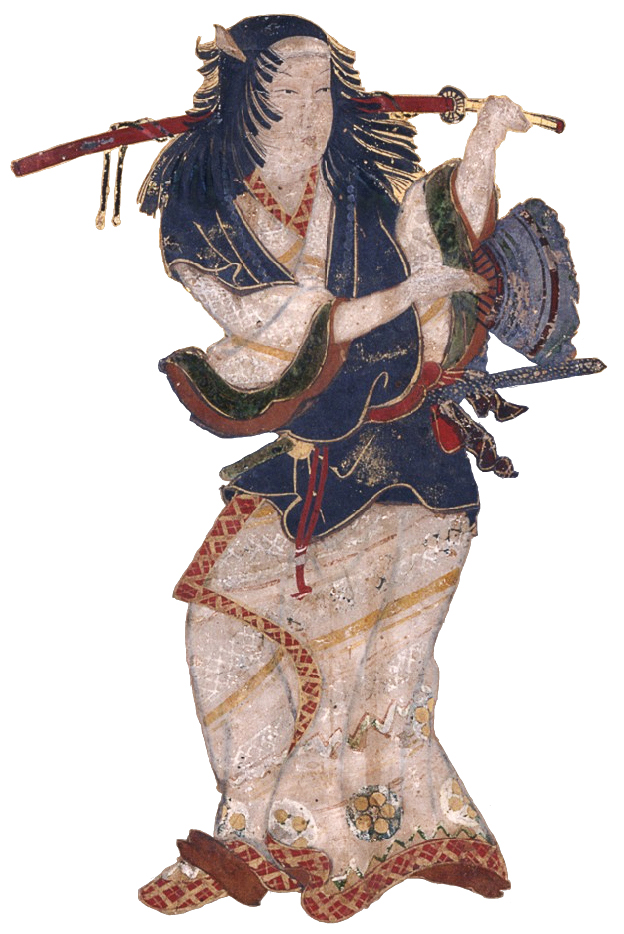|
Battle Of Ichi-no-Tani
The was fought between the attacking Minamoto clan and the defending Taira clan at Suma, to the west of present-day Kobe, Japan, on 20 March 1184. It sat on a very narrow strip of shore, between mountains on the north, and the sea to the south. This made it quite defensible, but also made it difficult to maneuver troops inside the fortress. The Taira suffered a crucial defeat to the forces of Minamoto no Yoshitsune and Minamoto no Noriyori. Battle Minamoto no Yoshitsune split his forces in two. Minamoto no Noriyori's forces attacked the Taira clan at Ikuta Shrine, in the woods a short distance to the east. A second detachment, no more than a hundred horsemen under Yoshitsune himself, attacked the Taira at Ichi-no-Tani from the mountain ridge to the north. At the chosen hour, the Minamoto forces attacked causing confusion among the Taira who neither deployed nor retreated. Only about 3,000 Taira escaped to Yashima, while Tadanori was killed and Shigehira captured. Also ki ... [...More Info...] [...Related Items...] OR: [Wikipedia] [Google] [Baidu] |
Genpei War
The was a national civil war between the Taira clan, Taira and Minamoto clan, Minamoto clans during the late Heian period of Japan. It resulted in the downfall of the Taira and the establishment of the Kamakura shogunate under Minamoto no Yoritomo, who appointed himself as ''Shōgun'' in 1192, governing Japan as a military dictator from the eastern city of Kamakura. It followed a ''coup d'état'' by the Taira in 1179 with the removal of rivals from all government posts, and subsequently banishing them, and a call to arms against the Taira, led by the Minamoto in 1180. The ensuing Battle of Uji (1180), Battle of Uji took place just outside Kyoto, starting a five-year-long war, concluding with a decisive Minamoto victory in the naval Battle of Dan-no-ura. However, it has been pointed out that the Battle of Ōshū in 1189 was the last battle during this period of civil war, as it completed Yoritomo's nationwide domination through the annexation of Tōhoku region, Northeast Japan. ... [...More Info...] [...Related Items...] OR: [Wikipedia] [Google] [Baidu] |
1184 In Asia
Year 1184 ( MCLXXXIV) was a leap year starting on Sunday of the Julian calendar. Events By place Europe * March 27 – Tamar of Georgia becomes queen regnant on the death of her father and coregent George III. She remains sole ruler of Georgia (the first woman to hold this office) until her death in 1213. * May 20 – Diet of Pentecost: Emperor Frederick Barbarossa, Holy Roman Emperor, organises a conference in Mainz. During the diet Frederick negotiates with Henry the Lion about an anti-French alliance with England. * June 15 – Battle of Fimreite: King Sverre of Norway defeats and kills his rival, Magnus V (Erlingsson) near Fimreite. Sverre takes the throne and becomes sole ruler of Norway (until 1202). * July 26 – Approximately 60 are killed in the Erfurt latrine disaster. * Summer – Almohad forces reconquer the Alentejo (except for Évora), and besiege Lisbon on land and blockade the port with their navy. A Portuguese soldier manages ... [...More Info...] [...Related Items...] OR: [Wikipedia] [Google] [Baidu] |
1180s In Japan , synthetic chemical element with atomic number 118
{{Numberdis ...
118 may refer to: *118 (number) *AD 118 *118 BC *118 (TV series) *118 (film) *118 (Tees) Corps Engineer Regiment *118 (Tees) Field Squadron, Royal Engineers *118 Peitho, a main-belt asteroid See also *11/8 (other) *Oganesson Oganesson is a synthetic element, synthetic chemical element; it has Chemical symbol, symbol Og and atomic number 118. It was first synthesized in 2002 at the Joint Institute for Nuclear Research (JINR) in Dubna, near Moscow, Russia, by a joint ... [...More Info...] [...Related Items...] OR: [Wikipedia] [Google] [Baidu] |
Sieges Of The Genpei War
A siege () . is a military blockade of a city, or fortress, with the intent of conquering by attrition, or by well-prepared assault. Siege warfare (also called siegecrafts or poliorcetics) is a form of constant, low-intensity conflict characterized by one party holding a strong, static, defensive position. Consequently, an opportunity for negotiation between combatants is common, as proximity and fluctuating advantage can encourage diplomacy. A siege occurs when an attacker encounters a city or fortress that cannot be easily taken by a quick assault, and which refuses to surrender (military), surrender. Sieges involve surrounding the target to block provision of supplies and reinforcement or escape of troops (a tactic known as "investment (military), investment"). This is typically coupled with attempts to reduce the fortifications by means of siege engines, artillery bombardment, mining (military), mining (also known as sapping), or the use of deception or treachery to bypass ... [...More Info...] [...Related Items...] OR: [Wikipedia] [Google] [Baidu] |
The Tale Of Heike
is an epic account compiled prior to 1330 of the struggle between the Taira clan and Minamoto clan for control of Japan at the end of the 12th century in the Genpei War (1180–1185). It has been translated into English at least five times. The first translation was by Arthur Lindsay Sadler, in 1918–1921. A complete translation in nearly 800 pages by Hiroshi Kitagawa & Bruce T. Tsuchida was published in 1975. It was also translated by Helen McCullough in 1988. An abridged translation by Burton Watson was published in 2006. In 2012, Royall Tyler completed his translation, which, he says, seeks to be mindful of the performance style for which the work was originally intended. Historical novelist Eiji Yoshikawa published a prose rendering in the '' Asahi Weekly'' in 1950, under the title ' (''Shin Heike Monogatari''). Background Title Heike () refers to the Taira (), ''hei'' being the ''on'yomi'' reading of the first ''kanji'' and "ke" () meaning "family". However, in t ... [...More Info...] [...Related Items...] OR: [Wikipedia] [Google] [Baidu] |
Woodblock Printing
Woodblock printing or block printing is a technique for printing text, images or patterns used widely throughout East Asia and originating in China in antiquity as a method of textile printing, printing on textiles and later on paper. Each page or image is created by carving a wooden block to leave only some areas and lines at the original level; it is these that are inked and show in the print, in a relief printing process. Carving the blocks is skilled and laborious work, but a large number of impressions can then be printed. As a Woodblock printing on textiles, method of printing on cloth, the earliest surviving examples from China date to before 220 AD. Woodblock printing existed in Tang China by the 7th century AD and remained the most common East Asian method of printing books and other texts, as well as images, until the 19th century. ''Ukiyo-e'' is the best-known type of moku hanga, Japanese woodblock art print. Most European uses of the technique for printing images on ... [...More Info...] [...Related Items...] OR: [Wikipedia] [Google] [Baidu] |
History Of Japan
The first human inhabitants of the Japanese archipelago have been traced to the Japanese Paleolithic, Paleolithic, around 38–39,000 years ago. The Jōmon period, named after its cord-marked pottery, was followed by the Yayoi period in the first millennium BC when new inventions were introduced from Asia. During this period, the first known written reference to Japan was recorded in the Chinese ''Book of Han'' in the first century AD. Around the 3rd century BC, the Yayoi people from the continent immigrated to the Japanese archipelago and introduced iron technology and agricultural civilization. Because they had an agricultural civilization, the population of the Yayoi began to grow rapidly and ultimately overwhelmed the Jōmon period, Jōmon people, natives of the Japanese archipelago who were hunter-gatherers. Between the fourth and ninth centuries, Japan's many kingdoms and tribes gradually came to be unified under a centralized government, nominally controlled by the Empe ... [...More Info...] [...Related Items...] OR: [Wikipedia] [Google] [Baidu] |
Honnō-ji Incident
The was the assassination of Japanese daimyo Oda Nobunaga at Honnō-ji, a temple in Kyoto, on 21 June 1582 (2nd day of the sixth month, Tenshō 10). Nobunaga was on the verge of unifying the country, but died in the unexpected rebellion of his vassal Akechi Mitsuhide. Nobunaga only had a few guards and retainers with him when he was attacked, ending his Sengoku period campaign to unify Japan under his power. Nobunaga's death was avenged two weeks later when his retainer Toyotomi Hideyoshi defeated Mitsuhide in the Battle of Yamazaki, paving the way for Hideyoshi to complete the unification of Japan. Mitsuhide's motive for assassinating Nobunaga is unknown, though there are multiple theories for his betrayal. Background By 1582, Oda Nobunaga was the most powerful daimyo in Japan and was continuing a sustained campaign of unification in the face of the ongoing political upheaval that characterized Japanese history during the Sengoku period. Nobunaga had destroyed the Ta ... [...More Info...] [...Related Items...] OR: [Wikipedia] [Google] [Baidu] |
Oda Nobunaga
was a Japanese ''daimyō'' and one of the leading figures of the Sengoku period, Sengoku and Azuchi-Momoyama periods. He was the and regarded as the first "Great Unifier" of Japan. He is sometimes referred as the "Demon Daimyō" and "Demon King of the Sixth Heaven". Nobunaga was an influential figure in Japanese history and is regarded as one of the three great unifiers of Japan, along with his Affinity (medieval), retainers, Toyotomi Hideyoshi and Tokugawa Ieyasu. Nobunaga paved the way for the successful reigns of Hideyoshi and Ieyasu by consolidating power, as head of the very powerful Oda clan, through a series of wars against other ''daimyō'' beginning in the 1560s. The period when Nobunaga and Hideyoshi were in power is called the Azuchi–Momoyama period. The name "Azuchi–Momoyama" comes from the fact that Nobunaga's castle, Azuchi Castle, was located in Azuchi, Shiga; while Fushimi Castle, where Hideyoshi lived after his retirement, was located in Momoyama. Nob ... [...More Info...] [...Related Items...] OR: [Wikipedia] [Google] [Baidu] |
Kabuki
is a classical form of Theatre of Japan, Japanese theatre, mixing dramatic performance with Japanese traditional dance, traditional dance. Kabuki theatre is known for its heavily stylised performances, its glamorous, highly decorated costumes, and for the elaborate make-up worn by some of its performers. Kabuki is thought to have originated in the early Edo period, when the art's founder, Izumo no Okuni, formed a female dance troupe that performed dances and light sketches in Kyoto. The art form later developed into its present all-male theatrical form after women were banned from performing in kabuki theatre in 1629. Kabuki developed throughout the late 17th century and reached its zenith in the mid-18th century. In 2005, kabuki theatre was proclaimed by UNESCO as an intangible heritage possessing outstanding universal value. In 2008, it was inscribed in the UNESCO Intangible Cultural Heritage Lists, UNESCO Representative List of the Intangible Cultural Heritage of Humanity ... [...More Info...] [...Related Items...] OR: [Wikipedia] [Google] [Baidu] |
The Tale Of The Heike
is an epic account compiled prior to 1330 of the struggle between the Taira clan and Minamoto clan for control of Japan at the end of the 12th century in the Genpei War (1180–1185). It has been translated into English at least five times. The first translation was by Arthur Lindsay Sadler, in 1918–1921. A complete translation in nearly 800 pages by Hiroshi Kitagawa & Bruce T. Tsuchida was published in 1975. It was also translated by Helen McCullough in 1988. An abridged translation by Burton Watson was published in 2006. In 2012, Royall Tyler completed his translation, which, he says, seeks to be mindful of the performance style for which the work was originally intended. Historical novelist Eiji Yoshikawa published a prose rendering in the '' Asahi Weekly'' in 1950, under the title ' (''Shin Heike Monogatari''). Background Title Heike () refers to the Taira (), ''hei'' being the ''on'yomi'' reading of the first ''kanji'' and "ke" () meaning "family". However, in t ... [...More Info...] [...Related Items...] OR: [Wikipedia] [Google] [Baidu] |






